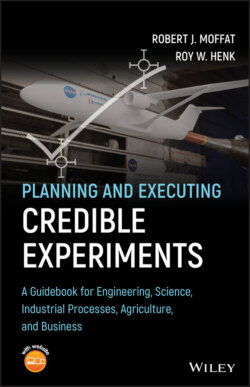Читать книгу Planning and Executing Credible Experiments - Robert J. Moffat - Страница 52
2.6 Uncertainty Analysis
ОглавлениеLow uncertainty, by itself, is no assurance of accuracy in our results. The mathematical process by which we estimate the uncertainty in the result is referred to as “uncertainty analysis.”
Uncertainty analysis is a powerful tool that, properly used, can help an experimenter develop a credible experiment. For example, we can use uncertainty analysis during the planning phase in order to select the approach offering the least uncertainty. We can use it to choose the most appropriate instruments. In the “shakedown and debugging phase” of an experiment, it helps to attribute which residual errors cause differences between our result and the expected result.
Uncertainty analysis was introduced to the American technical literature in a paper by Kline and McClintock (1953). Uncertainty analysis focuses on estimating how much uncertainty there is in the derived result as a consequence of the acknowledged uncertainties in the measurements. It follows a well‐defined set of operations involving the data interpretation equations and the input data. The basic mathematics have not changed since that first description, but the techniques have been elaborated and extended considerably. See references at the end of this chapter and chapters 10, 11.
Uncertainty analysis is an essential element in experiment planning, before and during execution. Uncertainty analysis is a tool by which we can identify the significance of small changes in the output. If the observed difference is larger than the derived uncertainty, this is evidence that the process being studied is not well modeled by the equations used – in other words, something is going on that we don't know about. Chapters 10 and 11 are devoted to uncertainty analysis.
Experimentally, we never know we are “right.” An essential element to a credible experiment is acknowledging that the best we can ever say is, “We have no evidence or suspicion that we are wrong.”
Reporting the uncertainty of every reported value is essential for others to believe our science.
